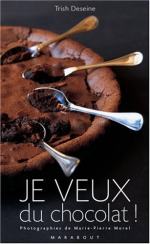|
This section contains 333 words (approx. 2 pages at 300 words per page) |
An ingredient of many popular treats—candies, sweets, baked goods, soft drinks, hot drinks, ice cream, and other frozen desserts. It is prepared, often as a paste, from the roasted crushed seeds (called cocoa beans) of the small South American cacao tree called Theobroma cacao (this is not the shrub known as the COCA PLANT, which produces COCAINE, Erythroxylon coca).
The cacao tree has small yellowish flowers, followed by fleshy yellow pods with many seeds. The dried, partly fermented fatty seeds are used to make the paste, which is mixed with sugar to produce the chocolate flavor loved throughout the world. Cocoa butter and cocoa powder are other important extracts from the bean. Cocoa beans were introduced to Europe by the Spanish, who brought them back from the New World in the sixteenth century. They had first been used by the civilizations of the New World—Mexicans, Aztecs, and Mayan royalty—in a ceremonial unsweetened drink and as a spice in special festive foods, such as molé. They were first used in Europe by the privileged classes to create a hot, sweet drink. By the seventeenth century, cocoa shops and COFFEE shops (cafés) became part of European life, serving free TOBACCO with drinks and thereby increasing trade with the New World colonies.
 Figure 1 Cacao Leaves and Pod
Figure 1 Cacao Leaves and Pod
Chocolate produces a mild stimulating effect caused by the THEOBROMINE and CAFFEINE it contains. Both are ALKALOIDS of the chemical class called xanthines. Theobromine in high doses has many effects on the body, and it is possible to become addicted to some xanthines, such as caffeine. Nevertheless, some people are so attracted to the flavor that compulsive or obsessive use has resulted in the newly coined term chocoholic. Some scientists are researching the phenylethylamine in chocolate as the factor that encourages compulsive chocolate ingestion.
Bibliography
SERAFIN, W. E. (1996). Drugs used in the treatment of asthma. In J. G. Hardman et al. (Eds.), The Pharmacological Basis of Therapeutics, 9th ed. (pp. 659-682). New York: McGraw-Hill.
|
This section contains 333 words (approx. 2 pages at 300 words per page) |


